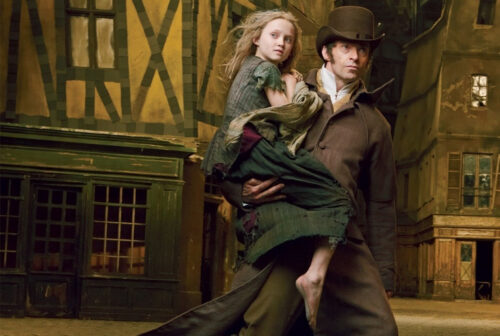10 Must-Watch Movies Based on Classic Literature
A book or a movie? Both literature and cinematography have their unique language of expression. Classic books often serve as a source of inspiration for directors and screenwriters. They may film exact adaptations or offer the audience to look at the story from a new angle, experimenting with known and loved plots. Let’s take a look at ten examples of classic books made into outstanding film adaptations.
1. Emma (2020)
Adaptation of Emma (1815) written by Jane Austen
A visionary young lady, Emma, appears in the fourth novel by Jane Austen. She is into matchmaking and enjoys introducing her single friends. Fascinating performance by Anya Taylor-Joy makes the main character even more charismatic and witty. The pleasant aesthetics, classic plot, and playful atmosphere create specific energy of the movie that is exciting to explore. Humorous and light-hearted, Emma invites you to laugh and dance together with the characters.
2. Jane Eyre (2006)
Adaptation of Jane Eyre (1847) written by Charlotte Brontë
Charlotte Brontë’s novel inspired multiple adaptations, but few of them capture all its nuances. The version of 2006 is one of such films. The adaptation includes four parts, which gives more time to explore the story and traits of its diverse characters. Students who take literature classes are often asked to compare and contrast the novel and movie. So using the best paper writing service can help you find similarities and differences in plot, theme, and setting.
3. Les Misérables (2012)
Adaptation of Les Misérables (1862) written by Victor Hugo
This adaptation of Les Misérables is for those people who are fond of musicals. The exceptional performance of Hugh Jackman, Russell Crowe, Anne Hathaway, Eddie Redmayne, and Helena Bonham Carter adds a lot to the film. The story unfolds in 19th-century France, where a former prisoner, Jean Valjean, saves Fantine’s daughter and agrees to take care of her. The movie combines high emotion and the power of classic literature.
4. Little Women (2019)
Adaptation of Little Women (1868) written by Louisa May Alcott
The movie revolves around the story of charming female characters who challenge gender stereotypes. It creates a multi-layered script, showing events asynchronously. Contrasting fragments of the narrative add to character development. It opens a new way to interpret the story as the audience can catch the causes and consequences of events in the characters’ lives.
5. One Flew Over the Cuckoo’s Nest (1975)
Adaptation of One Flew Over the Cuckoo’s Nest (1962) written by Ken Kesey
Many people believe that the book is always better than the movie. The film One Flew Over the Cuckoo’s Nest can prove them wrong. The adaptation is equally captivating and thought-provoking. The story is full of tension. It starts when a criminal, Randall McMurphy, pleads insanity and gets transferred to a psychiatric hospital. There, he has to stand up to abuse and oppression.
6. Pride and Prejudice (1995)
Adaptation of Pride and Prejudice (1813) written by Jane Austen
Pride and Prejudice is an iconic period drama. The story of Elizabeth Bennet and Mr. Darcy has won over the hearts of many. Among numerous adaptations, this one is the most faithful, and it remains the most successful attempt to bring Jane Austen’s characters to life. Besides, Colin Firth’s version of Mr. Darcy is worthy of admiration. In fact, the film is full of wonderful actors. Even secondary characters like Jane, Lydia, Charles, and Mr. Collins are complex and memorable.
7. The Great Gatsby (2013)
Adaptation of The Great Gatsby (1925) written by F. Scott Fitzgerald
The story unfolds in New York in the 20s. A young writer, Nick Carraway, gets to discover the enigmatic life story of his neighbor. The Great Gatsby invites the audience into the atmosphere of never-ending extravagant parties, expensive cars, and luxurious places. Yet, the rich and colorful setting covers a simple story. It is a movie about hopes, dreams, and the importance of genuine values.
8. The Seagull (2018)
Adaptation of the play The Seagull (1895) written by Anton Chekhov
Love, hope, human relations’”these are the basic themes in the adaptation of Anton Chekhov’s play. The source is precisely translated into the language of cinematography. It recreates the true atmosphere of the 19th century with beautiful locations and visual images. We should also highlight amazing attention to detail in dialogues and compelling narrative structure.
9. To Kill a Mockingbird (1962)
Adaptation of To Kill a Mockingbird (1960) written by Harper Lee
The adaptation of the story about a lawyer from Alabama appeared soon after the publication of the novel. Both the film and the novel became classic. To Kill a Mockingbird raises major problems like racial inequality, justice, class differences, and prejudice. Such serious matters are combined with the light atmosphere of childhood as the story is narrated from the point of view of a child.
10. Vanity Fair (2004)
Adaptation of Vanity Fair (1848) written by William Makepeace Thackeray
Vanity Fair has found its place among classic literature masterpieces. Its 2004 adaptation is well-known for a more sympathetic image of the main character, Becky Sharp. She is smart and good-looking. The only thing she lacks is high social status. The film shows twenty years of Becky’s life with ups and downs on her way to the desired position in society.
A book or a movie? Both literature and cinematography have their unique language of expression. Classic books often serve as a source of inspiration for directors and screenwriters. They may film exact adaptations or offer the audience to look at the story from a new angle, experimenting with known and loved plots. Let’s take a look at ten examples of classic books made into outstanding film adaptations.











